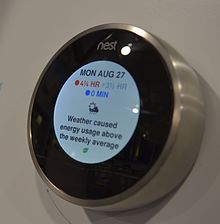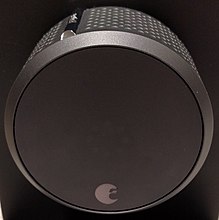Internet of Things(IOT)
"The Internet of Things is a network of physical objects – vehicles,
machines, home appliances, and more – that use sensors and APIs to
connect and exchange data over the Internet."
The Internet of things (IoT) is the network of devices such as vehicles, and home appliances that contain electronics, software, actuators, and connectivity which allows these things to connect, interact and exchange data.
The IoT involves extending Internet connectivity beyond standard devices, such as desktops, laptops, smartphones and tablets, to any range of traditionally dumb
or non-internet-enabled physical devices and everyday objects. Embedded
with technology, these devices can communicate and interact over the Internet, and they can be remotely monitored and controlled.
Smart toasters, connected rectal thermometers and fitness collars for dogs are just some of the everyday "dumb items" being connected to the web as part of the Internet of Things (IoT).
Connected machines and objects in factories offer the potential for a 'fourth industrial revolution', and experts predict more than half of new businesses will run on the IoT by 2020.
Here's everything you need to know about the increasingly connected world.
History
The term "Internet of things" was likely coined by Kevin Ashton of Procter & Gamble, later MIT's Auto-ID Center, in 1999, though he prefers the phrase "Internet for things". At that point, he viewed Radio-frequency identification (RFID) as essential to the Internet of things, which would allow computers to manage all individual things.
The definition of the Internet of things has evolved due to convergence of multiple technologies, real-time analytics, machine learning, commodity sensors, and embedded systems.Traditional fields of embedded systems, wireless sensor networks, control systems, automation (including home and building automation), and others all contribute to enabling the Internet of things.
Defining the Internet of things as "simply the point in time when more 'things or objects' were connected to the Internet than people", Cisco Systems estimated that the IOT was "born" between 2008 and 2009, with the things/people ratio growing from 0.08 in 2003 to 1.84 in 2010.
The concept of a network of smart devices was discussed as early as 1982, with a modified Coke vending machine at Carnegie Mellon University becoming the first Internet-connected appliance, able to report its inventory and whether newly loaded drinks were cold or not.Mark Weiser's 1991 paper on ubiquitous computing, "The Computer of the 21st Century", as well as academic venues such as UbiComp and PerCom produced the contemporary vision of the IoT. In 1994, Reza Raji described the concept in IEEE Spectrum as "[moving] small packets of data to a large set of nodes, so as to integrate and automate everything from home appliances to entire factories". Between 1993 and 1997, several companies proposed solutions like Microsoft's at Work or Novell's NEST. The field gained momentum when Bill Joy envisioned Device to Device (D2D) communication as a part of his "Six Webs" framework, presented at the World Economic Forum at Davos in 1999
What is the Internet of Things? — A Definition
While the answer to the question “what is the Internet of Things?” is fairly simple, the technology itself holds substantial ramifications to our societal and economic behavior. The Internet of Things (IoT)
describes a breadth of devices that connect to the Internet and that
communicate with other connected devices via wireless networks (cellular
and WiFi), and embedded sensors. It impacts the way we monitor and
interact with our environment, automate and shape our shopping habits,
and even affects how we maintain our physical health. Examples of IoT
devices include autonomous cars, smart appliances, and wearable tech.
The promise of connected devices is to not only solve larger, complex
issues such as health and environment but also to alleviate simpler
problems in our daily lives.
We are currently living in a world with IoT technology. However, the projected number of connected devices is expected to rise significantly by 2020.

We are currently living in a world with IoT technology. However, the projected number of connected devices is expected to rise significantly by 2020.

What is the Internet of Things? 11 IoT Facts
- Kevin Ashton first used the term during his presentation on RFID and supply chain for Proctor & Gamble in 1999.
- The first IoT device is the ATM, created back in 1974.
- Machine to Machine Communications (M2M) is the forbearer of IoT (and will still be in use alongside IoT). Both rely on devices communicating with each other via a network, but M2M “tends to have a more commercial and industrial connotation” while IoT defines a broader range of devices, according to Sierra Wireless.
- Cisco lists the industries benefiting from IoT. The list includes Manufacturing, Energy, Transportation, Smart Cities, Government, Education, Retail, Healthcare, and Financial Services.
- Siemens’s research suggests that there will be 26 billion IoT devices by 2020.
- Gartner predicts that a quarter billion connected cars will be in use by 2020.
- IoT may contain devices as small as dust that can be sprayed or injected. The devices may also be large enough to encompass an entire city.
- Smart clothing will be included in the marketplace of IoT devices. Tractica wrote that “sports enthusiasts are leading the adoption of smart clothing with sensor-infused shirts, shorts, sports bras, and socks that provide biometric data on muscle activity, breathing rate, and heart activity zones, all data that is not currently tracked by fitness bands or smart watches.”
- Gartner also predicts that smart kitchens will save the food and beverage industry 15 percent with its ability to streamline the food ordering process.
- According to Cisco’s survey, “60 percent of IoT initiatives stall at the Proof of Concept stage, and only 26 percent of companies have had an IoT initiative that they considered a complete success.” However, the outlook for future successful IoT projects remains optimistic.
- Barcelona “produced 30 percent energy savings across the urban lighting system” when they implemented a smart city infrastructure.
What Can the Internet of Things Do?
The Internet of Things promises to transform a wide range of fields. In medicine, for example, connected devices
can help medical professionals monitor patients inside and outside of a
hospital setting. Computers can then evaluate the data to help
practitioners adjust treatments and improve patient outcomes.
Another area that’s also experiencing a transformation is urban
planning. When sensors that have an IP address are placed under a busy
street, for instance, city officials can alert drivers about upcoming
delays or accidents. Meanwhile, intelligent trash cans are able to
notify the city when they become full, thus optimizing waste collection
routes.Applications
A Nest learning thermostat reporting on energy usage and local weather.
An August Home smart lock connected to the Internet

Consumer applications
A growing portion of IoT devices are created for consumer use, including connected vehicles, home automation, wearable technology (as part of Internet of Wearable Things (IoWT)), connected health, and appliances with remote monitoring capabilitiesCommercial application
Medical and healthcare
The Internet of Medical Things (also called the internet of health things) is an application of the IoT for medical and health related purposes, data collection and analysis for research, and monitoring.This 'Smart Healthcare', as it can also be called, led to the creation of a digitized healthcare system, connecting available medical resources and healthcare services.
- Transportation
- Building and home automation
Industrial applications
- Manufacturing
- Agriculture
7 Best Examples of Internet of Things That Show the Power of IOT
- Nest Smart Home. ...
- Kisi Smart Lock. ...
- Canary Smart Security System. ...
- DHL's IoT Tracking and Monitoring System. ...
- Cisco's Connected Factory. ...
- ProGlove's Smart Glove. ...
- Kohler Verdera Smart Mirror.
Trends and characteristics
Technology roadmap: Internet of things.
 The IoT's major significant trend in recent years is the explosive growth of devices connected and controlled by the Internet.
The wide range of applications for IoT technology mean that the
specifics can be very different from one device to the next but there
are basic characteristics shared by most.
The IoT's major significant trend in recent years is the explosive growth of devices connected and controlled by the Internet.
The wide range of applications for IoT technology mean that the
specifics can be very different from one device to the next but there
are basic characteristics shared by most.
The IoT creates opportunities for more direct integration of the physical world into computer-based systems, resulting in efficiency improvements, economic benefits, and reduced human exertions.
The number of IoT devices increased 31% year-over-year to 8.4 billion in the year 2017 and it is estimated that there will be 30 billion devices by 2020. The global market value of IoT is projected to reach $7.1 trillion by 2020.
Intelligence
Architecture
Network architecture
Complexity
Size considerations
Space considerations
A solution to "basket of remotes"
Business planning and models
According to 2018 study, 70–75% of IoT deployments were stuck in the pilot or prototype stage, unable to reach scale due in part to a lack of business planning.Studies on IoT literature and projects show a disproportionate prominence of technology in the IoT projects, which are often driven by technological interventions rather than business model innovation.



0 Comments